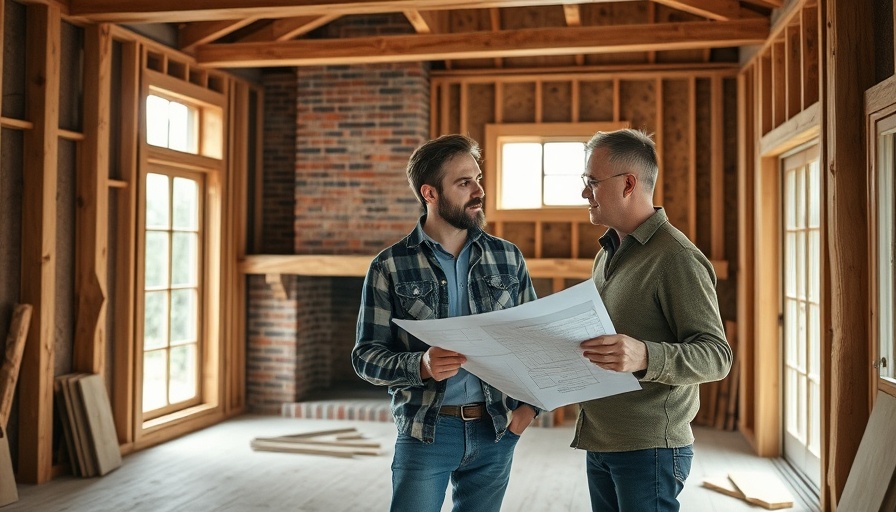
The Appeal of Floating Vanities: A Modern Bathroom Revolution
Remodeling a bathroom can express personal style while also improving functionality. One standout feature gaining popularity in California homes is the floating vanity. These wall-mounted units not only save space but also create an illusion of larger areas, making them ideal for smaller bathrooms. In this article, we explore four remarkable transformations around the Golden State that showcase how floating vanities can enhance both aesthetics and practicality in bathroom design.
Before and After: Transformations That Inspire
The transformations detailed below provide a glimpse into the world of modern design where homeowners have turned their dated bathrooms into luxurious retreats. With floating vanities taking center stage, each project highlights thoughtful design choices and innovative solutions. Let’s take a look:
1. Warm and Modern—San Clemente’s Revamp
This stunning 88-square-foot bathroom belonged to Kaveh and Alena Zoghi, who crafted a light and airy atmosphere by replacing a bulky standard wood vanity with a modern floating design. Initially feeling cramped and outdated, the space was dramatically transformed by removing an unnecessary closet to open up the layout. The result is a soothing oasis adorned with neutral tones and warm finishes, allowing for effortlessly clean lines.
2. Coastal Chic—A Fresh Look in Oceanside
Located in Oceanside, this charming bathroom underwent a complete makeover. The previous dark cabinetry and limited storage were swapped out for a sleek, pale vanity that emphasizes openness. Strategically using marine-themed accents and colors, designers made the room feel like a vacation retreat. The floating style is not only functional but also lends a relaxed vibe, perfect for a coastal home.
3. Urban Elegance—Revitalizing a Los Angeles Space
In the heart of Los Angeles, a small condo bathroom received a sophisticated facelift. The tight dimensions were transformed into a stylish yet functional area with a floating black vanity, contrasting beautifully against the light walls and intricate tile work. This design significantly enhances the contemporary urban living experience, showcasing how floating vanities can redefine even the most limited spaces.
4. Spa-like Serenity—A New York Retreat
This final example illustrates how the use of a floating vanity can evoke feelings of tranquility. In a renovated apartment, a compact but elegant floating vanity was paired with natural materials. The overall effect is serene and calming, creating a mini-spa experience right within the home. Its open shelf-design provides a chic display for neatly organized toiletries, blending beauty with utility.
Why Floating Vanities?
Floating vanities offer several practical benefits. Firstly, they create a lighter, more open visual feel, especially crucial in smaller bathrooms where space is limited. The absence of bulky cabinetry allows for easier cleaning beneath the unit. Additionally, designers have capitalized on wall-mounted features that can also incorporate smart storage solutions, maximizing efficiency without compromising on style.
Incorporating Floating Vanities: Practical Steps for Homeowners
If you’re considering a bathroom remodel, here are some essential tips to keep in mind when incorporating floating vanities:
- Determine Your Space: Measure your bathroom properly to choose the right size floating vanity.
- Select the Right Style: Floating vanities come in various designs; opt for one that complements your home’s aesthetics.
- Plan for Plumbing: Consider plumbing adjustments since floating units don’t sit on the floor and may require custom configurations.
- Maximize Storage: Consider a multi-tier vanity or additional shelf space to keep essentials within reach.
- Think Lighting: Good lighting can accentuate your floating vanity, enhancing the overall bathroom appearance.
Conclusion: The Smart Choice for Modern Bathrooms
Floating vanities symbolize a trend towards modern, efficient spaces that marry form with function. By choosing a floating design, homeowners can achieve a fresh look while also inviting practicality into their renovations. As captured in these inspiring examples from California homes, the right vanity can transform a simple bathroom into a stylish retreat. Ready to enhance your bathroom experience? Consider the benefits of floating vanities in your next home improvement project.
 Add Row
Add Row  Add
Add 




Write A Comment